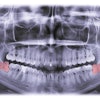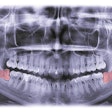
In a new study, U.K. scientists report that the incidence of life-threatening heart infection has increased significantly in England since the introduction of the 2008 National Institute for Health and Care Excellence (NICE) guidelines, as dentists have written fewer prescriptions for prophylactic antibiotics before invasive procedures. The study findings were presented this week at the American Heart Association Scientific Sessions in Chicago.
The study, also published online in Lancet (November 18, 2014), is the largest and most comprehensive to be conducted with regard to the NICE guidelines, which recommended that dentists should no longer give antibiotics before invasive treatments to people considered at risk for infective endocarditis. According to the study authors, 40% of infective endocarditis cases are caused by oral bacteria.
However, the authors did point out that their data do not establish a causal association.
In the U.K., the 2008 NICE guidelines recommended complete cessation of antibiotic prophylaxis for preventing infective endocarditis.
Antibiotic prophylaxis given before invasive dental procedures in patients at risk of developing infective endocarditis has historically been the focus of infective endocarditis prevention, the authors noted. However, the recent changes in antibiotic prophylaxis guidelines in the U.S. and Europe, such as NICE, have substantially reduced the number of patients for whom antibiotic prophylaxis is recommended.
A team of international researchers, led by Martin Thornhill, PhD, a professor of translational research in dentistry at the University of Sheffield School of Clinical Dentistry, wanted to investigate changes in the prescribing of antibiotic prophylaxis and the incidence of infective endocarditis since the introduction of these guidelines.
The researchers completed a retrospective secular trend study and analyzed data for the prescription of antibiotic prophylaxis from January 1, 2004, to March 31, 2013, and also hospital discharge episode statistics for patients with a primary diagnosis of infective endocarditis from January 1, 2000, to March 31, 2013.
“Healthcare professionals and patients should focus on maintaining high standards of oral hygiene.”
They discovered that infective endocarditis cases have increased above the expected trend since the NICE guidelines were introduced. By March 2013, this meant approximately an extra 35 cases per month. This increase in the incidence of infective endocarditis was significant for individuals at high and lower risk for the condition.
The researchers also identified that the prescribing of antibiotic prophylaxis fell by 89% from 10,900 prescriptions a month before the 2008 guidelines to 1,235 a month by March 2008.
"Infective endocarditis is a rare but serious infection of the heart lining," Thornhill stated in a press release. "We hope that our data will provide the information that guideline committees need to re-evaluate the benefits, or not, of giving antibiotic prophylaxis."
Thornhill emphasized that dentists and other healthcare professionals should wait for the guideline committees to evaluate the evidence and give their advice before changing their current practice.
"In the meantime, healthcare professionals and patients should focus on maintaining high standards of oral hygiene," he continued. "This will reduce the number of bacteria in the mouth which have the potential to cause [infective endocarditis] and reduce the need for invasive dental procedures to be performed."
"The findings play an important part in the ongoing exploration of the link between dental and heart health," stated Barbara Harpham, the national director of Heart Research UK, in the release. "Projects such as this one are vital to the ongoing collation of evidence to support our understanding of how oral health can impact upon the heart and other conditions within the body."
The research was funded by a grant from Heart Research UK, Simplyhealth, and the National Institute for Dental and Craniofacial Research.



















